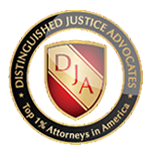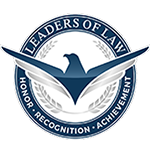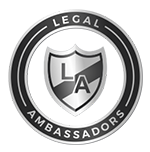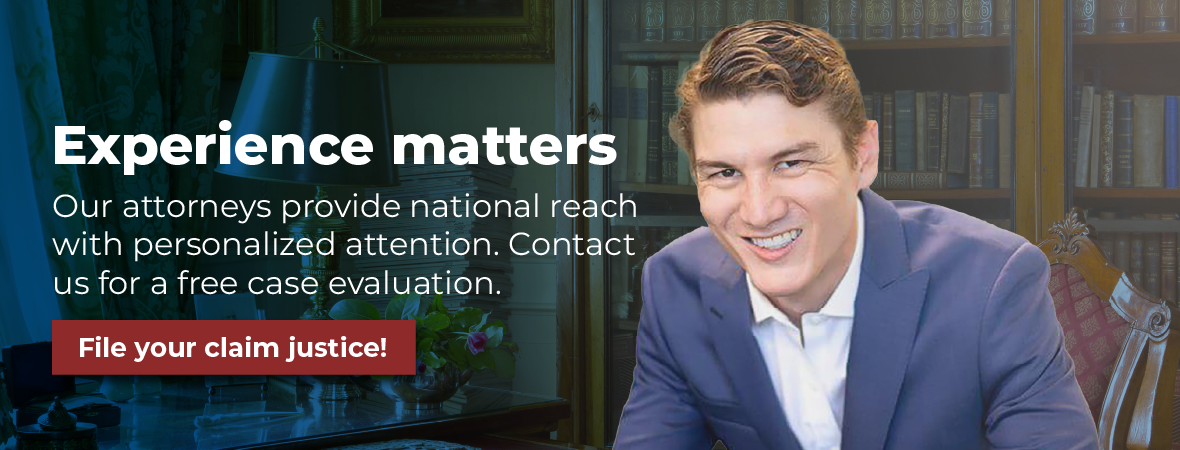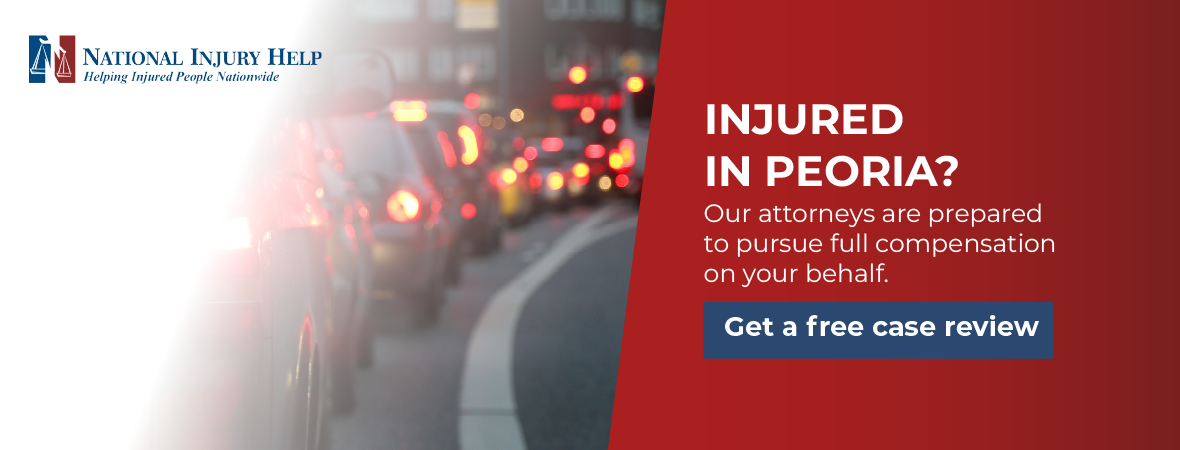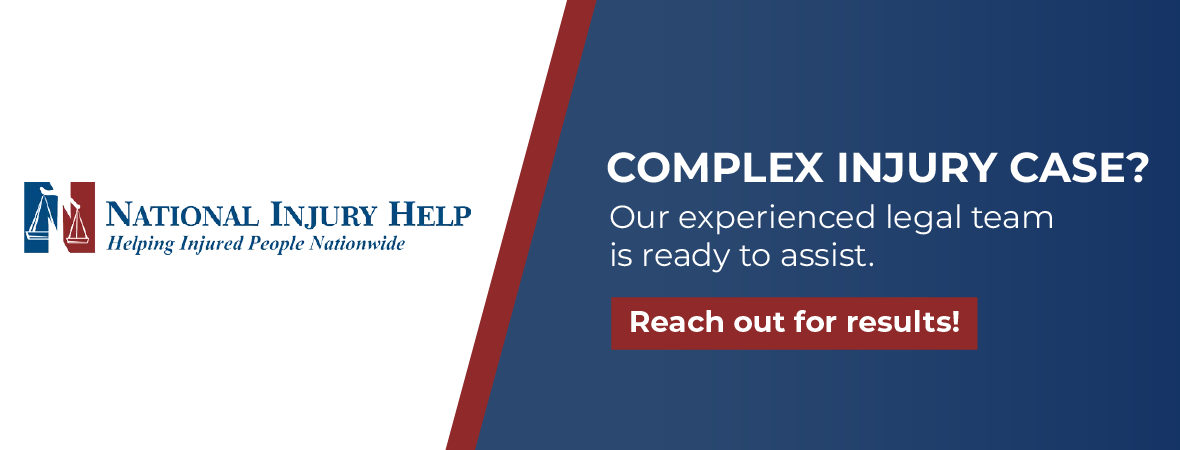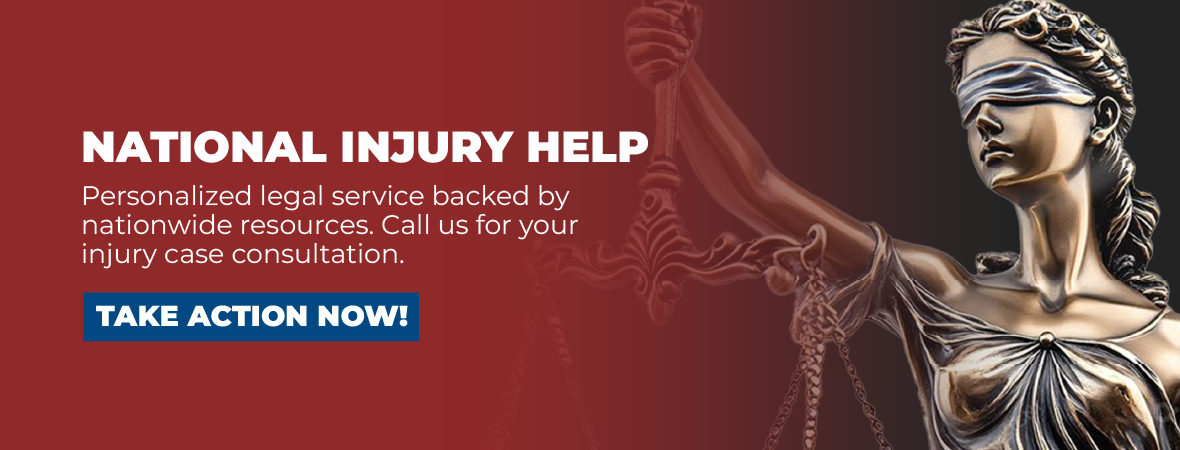Dealing with insurance after a car crash in Peoria can be confusing and stressful. Contact our team at National Injury Help by calling 1 (800) 214-1010 today.
Most people believe insurance exists to help after an accident. That belief fades fast once the phone calls begin. Carriers work to pay as little as the law allows. They use time limits, paperwork requirements, and clever questions that steer you toward answers that weaken your claim. Arizona statutes and policy language give you rights that can stop these tactics, yet you need to know what those rights are and when to use them.
This guide breaks down the maze one piece at a time. You will learn how Arizona’s at-fault insurance system works, what steps to take right after a crash, and how to file a strong claim without falling into the traps insurers set.
When questions get complex, a Peoria accident attorney can step in, handle the hard conversations, and push carriers toward a fair result. We are here to handle the insurance issues and fight for the compensation you deserve. Let us begin with the legal rules that shape every claim in this state.
Arizona’s Car Insurance Laws and How They Affect Your Claim
Arizona follows an at-fault model. That means the driver who caused the crash, and that driver’s insurance company, must pay for damages. The system sounds simple on paper, but real-world claims often involve limited policy limits, shared blame, and questions about optional coverages. Understanding these elements helps you decide which insurer to contact first and how large a settlement to demand.
At-Fault Insurance System
When a wreck happens in Peoria, police investigate and insurers read the report to see which driver violated a traffic rule.
If the other driver ran a red light, failed to yield, or rear-ended you in heavy traffic, that driver’s carrier becomes the primary source of payment for repairs, medical bills, and lost wages. Your own insurer may pay certain expenses up front, yet it will ask for reimbursement from the at-fault carrier later.
Minimum Insurance Requirements
Arizona Revised Statutes section 28-4009 sets the lowest limits a driver can carry. Policies must provide at least twenty-five thousand dollars for bodily injury to one person, fifty thousand for bodily injury to everyone hurt in a single crash, and fifteen thousand for property damage.
These numbers sound large until you consider the typical cost of a single ambulance ride, a CT scan, and a bumper replacement. Major hospital stays or multiple injured passengers can blow past minimum limits in a single day.
Optional Coverages That May Apply
Because minimum limits often fall short, many drivers buy extras. Uninsured motorist, called UM, pays when a driver with no accident coverage in AZ hits you. Underinsured motorist, called UIM, adds money when the at-fault driver’s limits run out.
Medical payments coverage, usually labeled MedPay, gives you a pool of funds for hospital bills regardless of fault. Collision pays for your own vehicle damage after any crash, while comprehensive covers weather, theft, and animal strikes.
Comparative Negligence Rule
Arizona follows a pure comparative negligence standard. That rule lets you collect damages even if you share some blame.
For example, if a jury decides you were twenty percent at fault because you turned on a yellow light but the other driver was eighty percent at fault for speeding, you can still recover eighty percent of your losses. Insurers know this and often try to pin at least part of the blame on you to cut payouts. Detailed evidence keeps your percentage low and the settlement high.
What to Do After a Car Crash in Peoria
A calm plan turns chaos into control. Each step below builds on the last. Follow them in order when possible or return to any missed step as soon as conditions allow.
Step 1: Ensure Safety and Call 911
First, get yourself, passengers, and if possible, the vehicles out of the flow of traffic. Turn on hazard lights, set out reflectors, and check for pain.
When in doubt about injuries, call an ambulance. Better to ride to Banner Boswell Medical Center and find no fracture than to limp home and discover a torn ligament days later. Tell the dispatcher how many people are hurt so paramedics can bring enough help.
Step 2: Exchange Information With the Other Driver
Arizona requires drivers involved in a crash to share their names, addresses, registration numbers, and insurer contact information. Take a clear photo of the other driver’s ID, insurance card, and license plate so no digits get transposed later. If the driver refuses to cooperate, do not argue. Wait for the police and let them collect the data.
Step 3: Document the Scene
Pull out your phone and capture the full scene before tow trucks move the evidence. Start with wide shots that show lane markings, traffic lights, skid marks, and vehicle positions. Then zoom in on broken glass, deployed airbags, bruises, or seat belt gouges.
Ask any witnesses for names and numbers. Their stories carry weight when insurers question fault.
Step 4: File a Police Report
Peoria Police or the Arizona Department of Public Safety will send an officer to crashes involving injury, death, or significant property damage.
The report number lets you request the full document later. Officers list citations, witness statements, and basic diagrams. Insurers treat that report as neutral evidence, so accurate details matter.
Step 5: Notify Your Insurance Company
Most policies require prompt notice, sometimes within twenty-four hours. Give basic facts: date, time, location, vehicles involved, name of the investigating agency, and a short statement that you will provide more after you speak with counsel.
Avoid speculation. Never say “I might have looked away” or “I guess I was speeding” because those phrases can haunt you later.
Filing Your Car Accident Insurance Claim in Arizona
The claims process runs on deadlines. Missing one reduces leverage or even bars payment. The following points keep the schedule on track and protect your position.
Contact Your Insurer Promptly
Call the number on your policy card as soon as you are stable. The carrier sets up a claim file, assigns an adjuster, and schedules a vehicle inspection at an approved shop. If you delay beyond the policy timeframe, the company can deny parts of the claim for late notice.
Understand the Types of Claims
A single wreck can spawn several files. Property damage handles repairs or the total loss value. Bodily injury addresses medical bills, pain, and lost income.
If you used collision to fix your car while liability remains in dispute, another file opens for subrogation later. Keep paperwork sorted by claim number to avoid confusion.
Dealing With the At-Fault Driver’s Insurance
As soon as that carrier receives the police report, it will open its own claim. An adjuster may call to obtain your version of events.
You can provide your contact information, the basics of the crash, and details about your vehicle’s location. Politely decline any requests for a recorded statement until you have legal advice.
Subrogation and Reimbursement
If your insurer pays for repairs or medical care under collision or MedPay, it may pursue the at-fault insurer for reimbursement. This action is called subrogation. Keep in contact with your adjuster so you know when funds arrive and whether any deductibles or liens can be waived or released.
Watch for Recorded Statements
The other driver’s insurer will likely ask for a recorded interview. Arizona law does not force you to comply. These questions often look harmless, yet may include traps that shift blame. If the policyholder’s carrier insists, schedule the call after you have reviewed your notes, medical status, and police report with an attorney.
Common Tactics Insurance Companies Use to Reduce or Deny Claims
Adjusters attend training courses on negotiation psychology. They know that stress makes people accept less money. Learn the script so it loses power.
Delaying the Process
One popular line is that the file remains under review. Weeks pass, then months. Medical bills pile up. The goal is simple: pressure you into giving up or accepting a low sum. A lawyer can file bad-faith complaints and set firm deadlines that force action.
Offering Low Settlements Quickly
Some carriers do the opposite. They send a check within days for car repairs and a small amount for pain.
Once you sign the release, that case closes forever, even if you later discover a herniated disc or need knee surgery. Always wait until doctors confirm maximum medical improvement before finalizing.
Disputing Liability
If comparative negligence could reduce the payout, the adjuster would search for any statement that admits partial fault.
Photos that show your car slightly over a line or a delay in calling the police can surface later as evidence against you. Detailed accident reconstruction and witness statements keep blame where it belongs.
Requesting Excessive Documentation
An adjuster may ask for five years of medical history, tax returns, and social media posts. Some paperwork is fair. Demands far beyond what relates to the crash often aim to discourage you. Provide only documents tied directly to injuries, and document each handover.
Monitoring Social Media
Posts showing you at a birthday party or hiking Thunderbird Park let insurers argue that pain is minor. Even when photos are old, the date stamp looks current. Set profiles to private, avoid new posts that could be misunderstood, and remind friends not to tag you during recovery.
How a Peoria Car Accident Lawyer Can Strengthen Your Insurance Claim
Legal counsel brings experience with local courts, knowledge of medical experts, and negotiation skills that most individuals cannot match while recovering from injury.
Handle All Communication With Insurers
Once the insurer learns you have counsel, calls and emails go to your attorney instead of your phone. This change prevents casual questions that could undercut your case. It also frees you to concentrate on treatment rather than paperwork.
Collect Evidence to Prove Liability and Damages
Lawyers pull the crash report and subpoena traffic camera footage, and hire accident reconstruction experts who translate skid lengths into speed. They gather medical records, imaging scans, and billing codes that document every expense. When injuries project into the future, your lawyer secures expert opinions on surgery, therapy, and medication plans.
Calculate Full Damages
Compensation must cover more than the current bills. An attorney reviews wage statements, career path projections, and benefit packages to measure future income loss. Pain and suffering receive attention through journals, therapist notes, and statements from family and friends outlining how daily life changed.
Negotiate Aggressively
Insurance companies respect firm numbers tied to documented evidence. Your lawyer presents a demand letter supported by invoices, expert evaluations, and legal citations. Negotiation then moves through counteroffers toward a fair midpoint. If the carrier refuses to honor policy limits, the attorney can file a bad-faith claim seeking even greater damages.
File a Lawsuit If Needed
Sometimes, trial is the only path. A complaint sent to the Maricopa County Superior Court triggers discovery. Each side exchanges evidence, deposes witnesses, and files motions. Many cases settle before trial once the defense sees the quality of your documentation and the credibility of your experts. If no fair offer arises, your attorney argues before a jury.
Contact a Peoria Car Crash Lawyer for Help With Your Insurance Claim
After a car crash, it can feel like the real struggle starts with the insurance process. While you are focused on healing, adjusters may be working behind the scenes to protect the company’s bottom line. At National Injury Help, we make sure your rights come first.
If you were injured in a Peoria car accident, the insurance company may pressure you to give a statement, accept a quick settlement, or sign forms you do not fully understand. These offers often fall short of what your claim is truly worth. Before you agree to anything, speak with an experienced Peoria car accident attorney.
Our team helps people just like you every day. We know how to gather police reports, medical records, witness statements, and crash scene evidence to support your claim. We also handle all communication with insurers so you can focus on your recovery instead of stressful phone calls or paperwork.
We serve clients throughout Peoria, whether your accident happened on Thunderbird Road, near Lake Pleasant Parkway, or while driving along Loop 101. No matter where you were hit, we are here to help.
There are no upfront costs. Our team works on a contingency fee, which means you only pay if we recover money for you. The consultation is free, and there is no pressure to move forward unless you are ready.
Call 1 (800) 214-1010 today to speak with a local Peoria car crash lawyer who can guide you through your Peoria auto insurance claim process, assist you in dealing with adjusters, and fight for the compensation you deserve.
Frequently Asked Questions: Insurance Claims After a Peoria Car Accident
What are Arizona’s minimum car insurance requirements?
Arizona law requires drivers to carry at least $25,000 for bodily injury to one person, $50,000 for total bodily injury per accident, and $15,000 for property damage. These are often insufficient to cover the full costs of a serious accident.
What is the first thing I should do after a car accident in Peoria?
First, ensure safety and call 911. Get yourself and your vehicle out of traffic if possible, turn on hazard lights, and seek medical attention, even for minor pains. It’s important to get checked at a local hospital like Banner Boswell Medical Center.
What information should I exchange with the other driver?
Arizona law requires you to share your name, address, vehicle registration number, and insurance information. Use your phone to take clear photos of the other driver’s license, insurance card, and license plate.
Should I file a police report for a Peoria car accident?
Yes. Peoria Police or the Arizona Department of Public Safety should be called to the scene for accidents involving injury, death, or significant property damage. The police report provides neutral evidence that insurers rely on.
When should I contact my insurance company after a crash?
Notify your insurer promptly, as most policies require notice within a short timeframe, sometimes 24 hours. Provide basic facts like the date, time, location, and vehicles involved, but avoid giving a detailed statement or speculating about fault.
What is a recorded statement, and do I have to give one to the other driver’s insurance company?
A recorded statement is a formal interview. The at-fault driver’s insurer will often request one, but Arizona law does not force you to comply. It is generally advised to decline until you have spoken with a lawyer, as these questions can contain traps to reduce your claim.
What if the insurance company offers me a quick settlement?
Be cautious. Insurers may offer a fast, low settlement to close your case before the full extent of your injuries is known. Do not accept any settlement until you have reached maximum medical improvement and understand the full value of your claim.
How can a Peoria car accident lawyer help with my insurance claim?
A lawyer can handle all communication with insurers, collect evidence like police reports and traffic camera footage, calculate the full value of your damages (including future medical needs and lost wages), and negotiate aggressively on your behalf. They can also file a lawsuit if a fair settlement cannot be reached.
What if I can’t afford a lawyer?
National Injury Help, the firm behind this article, works on a contingency fee basis. This means you pay no upfront costs, and they only get paid if they recover money for you. The initial consultation is free.
What are some common tactics insurance companies use to reduce claims?
Insurers may delay the process, dispute liability by arguing you were partially at fault, request excessive documentation, or monitor your social media to argue your injuries are not severe. An attorney knows how to counter these tactics.

